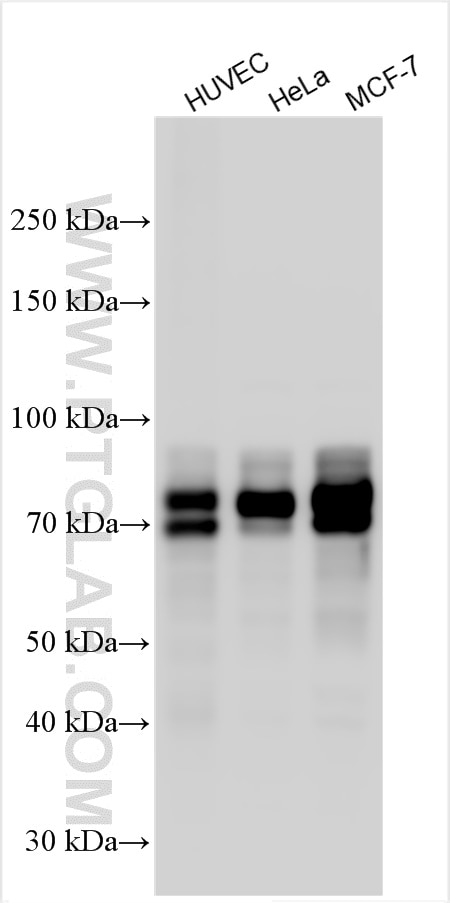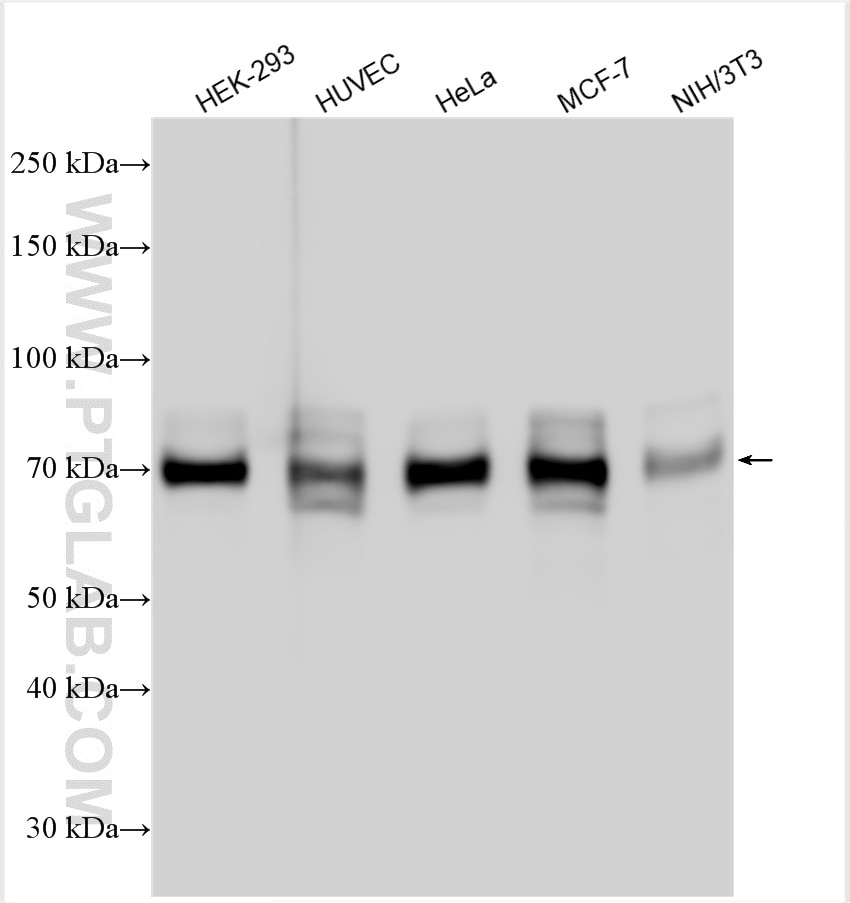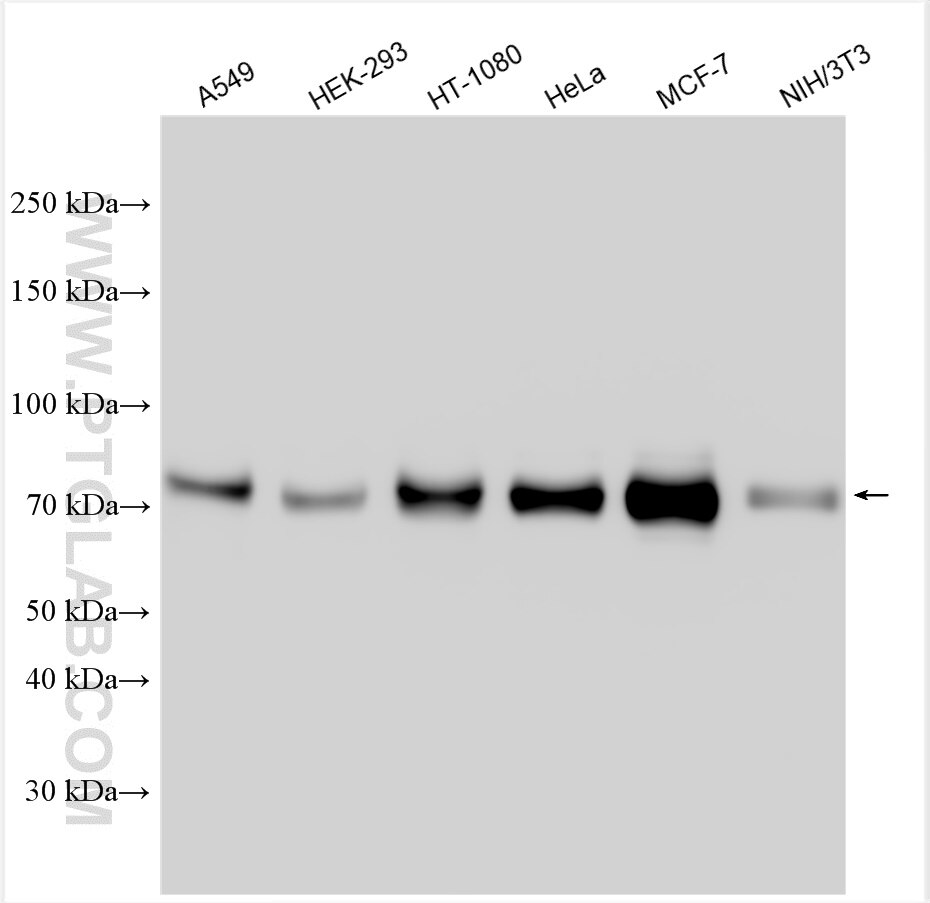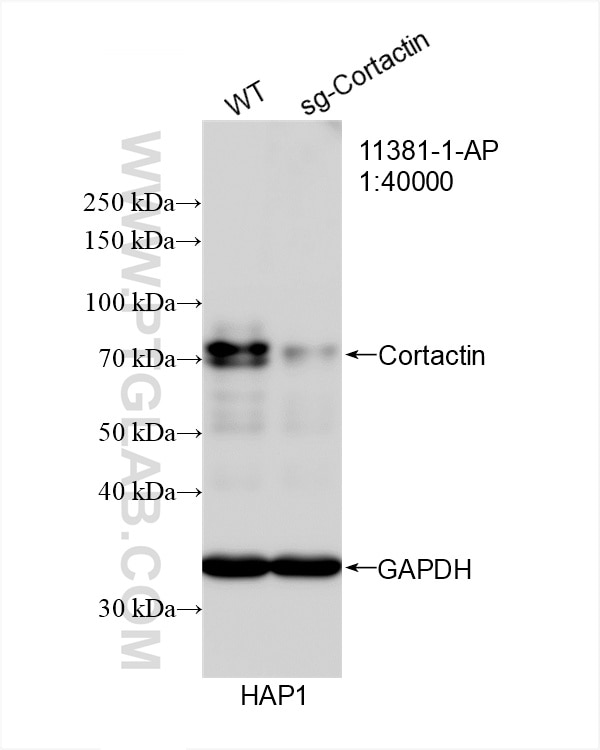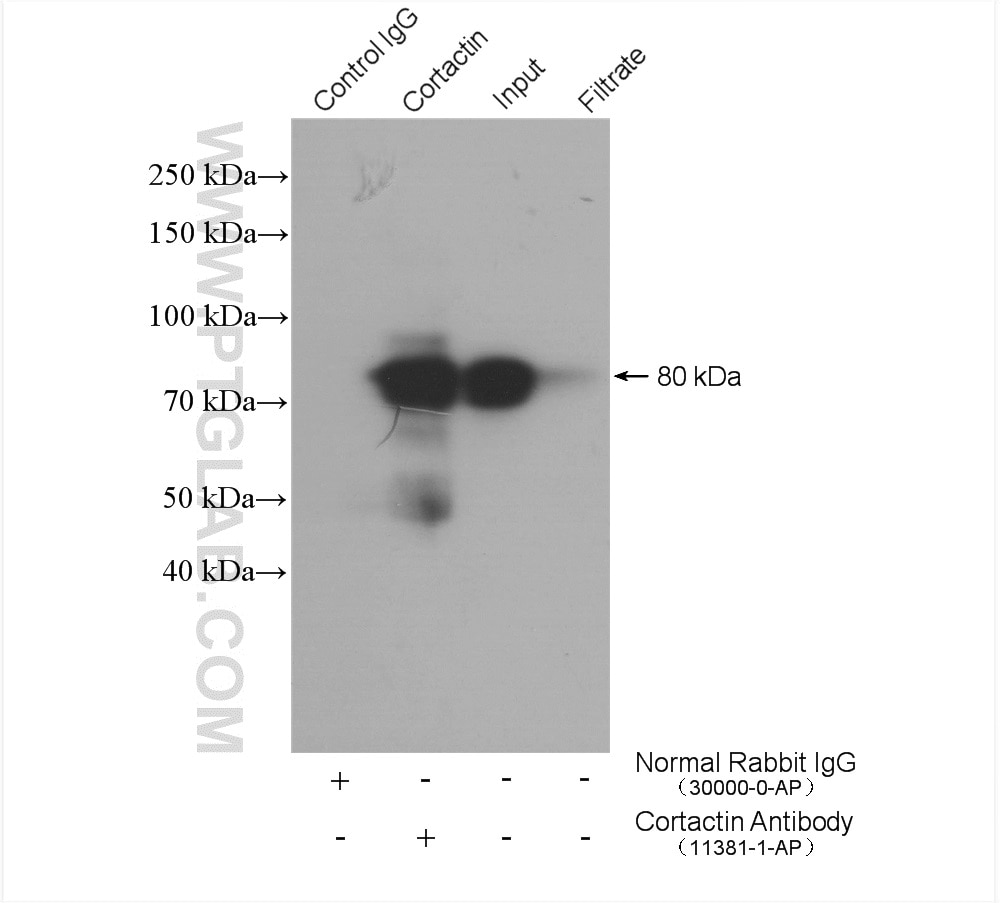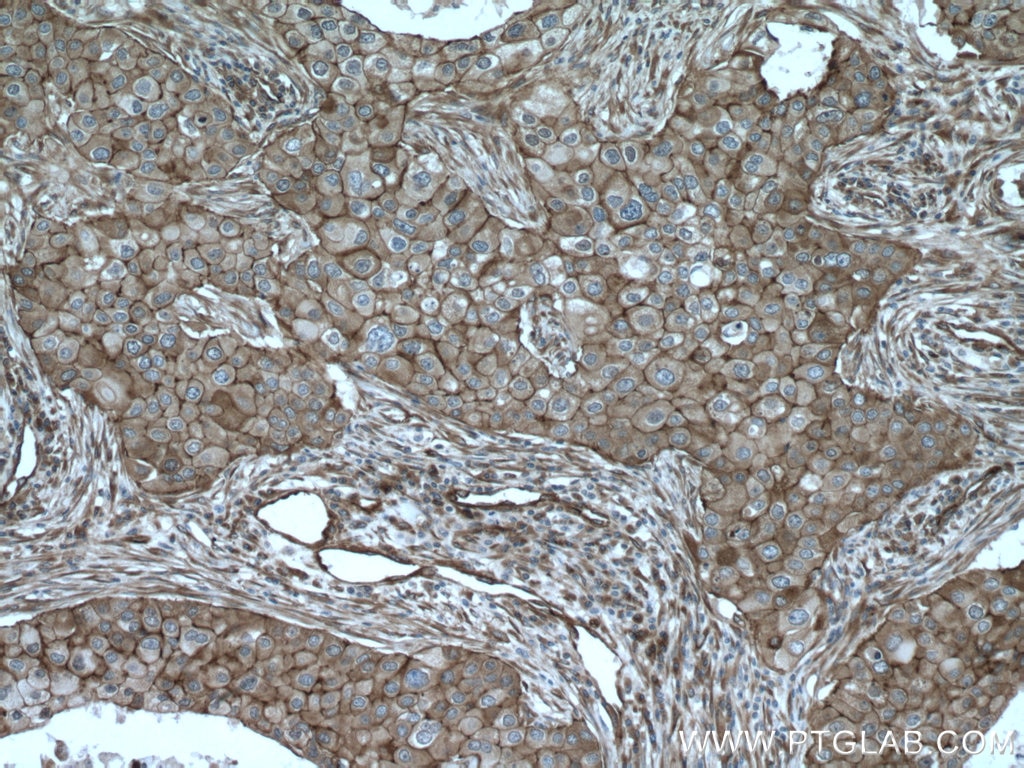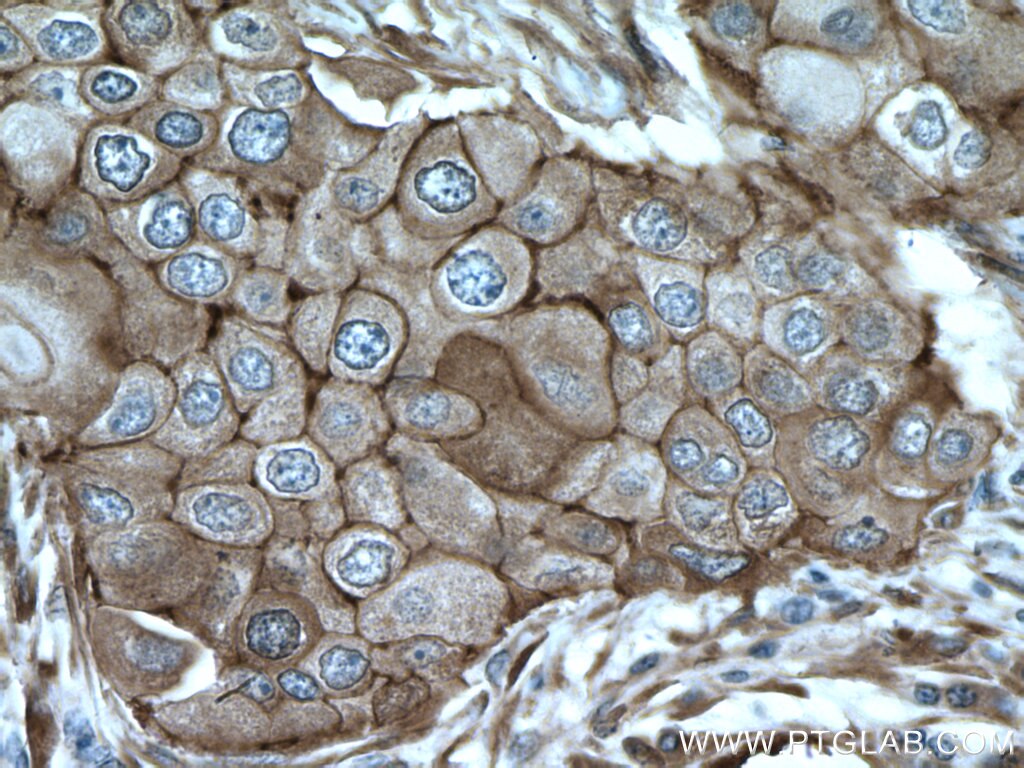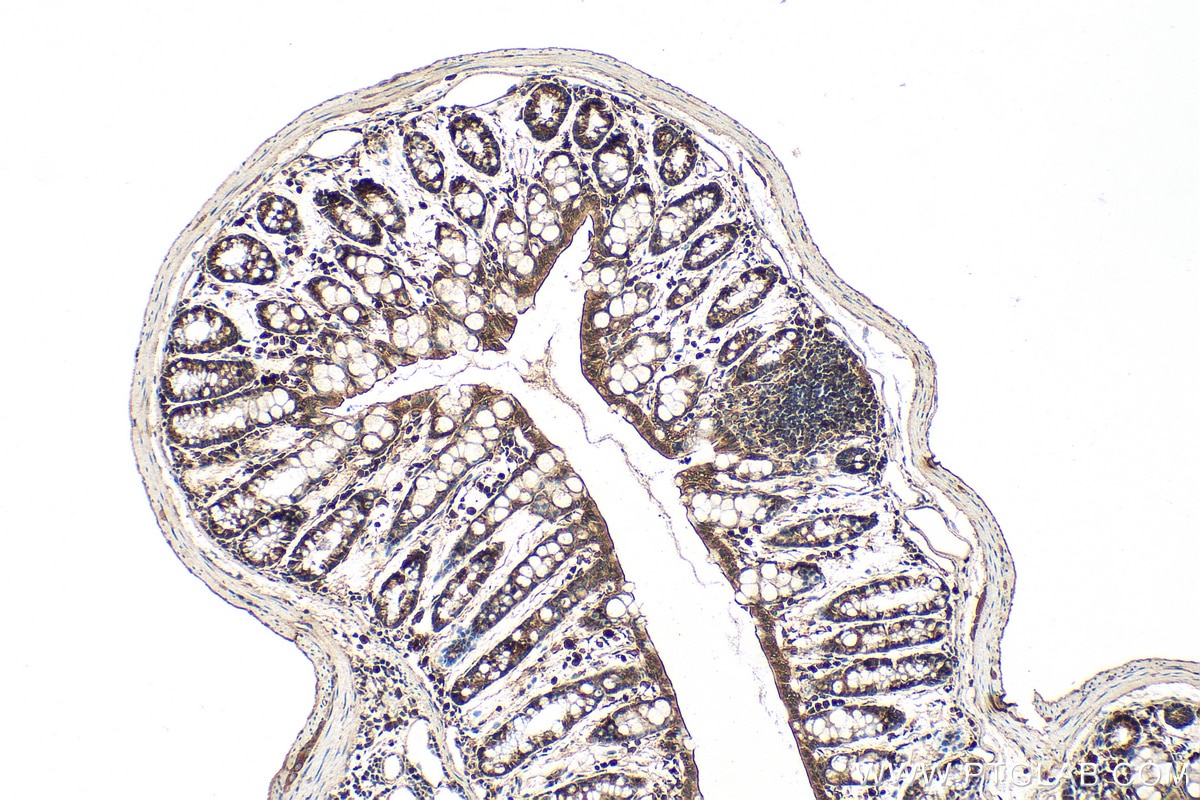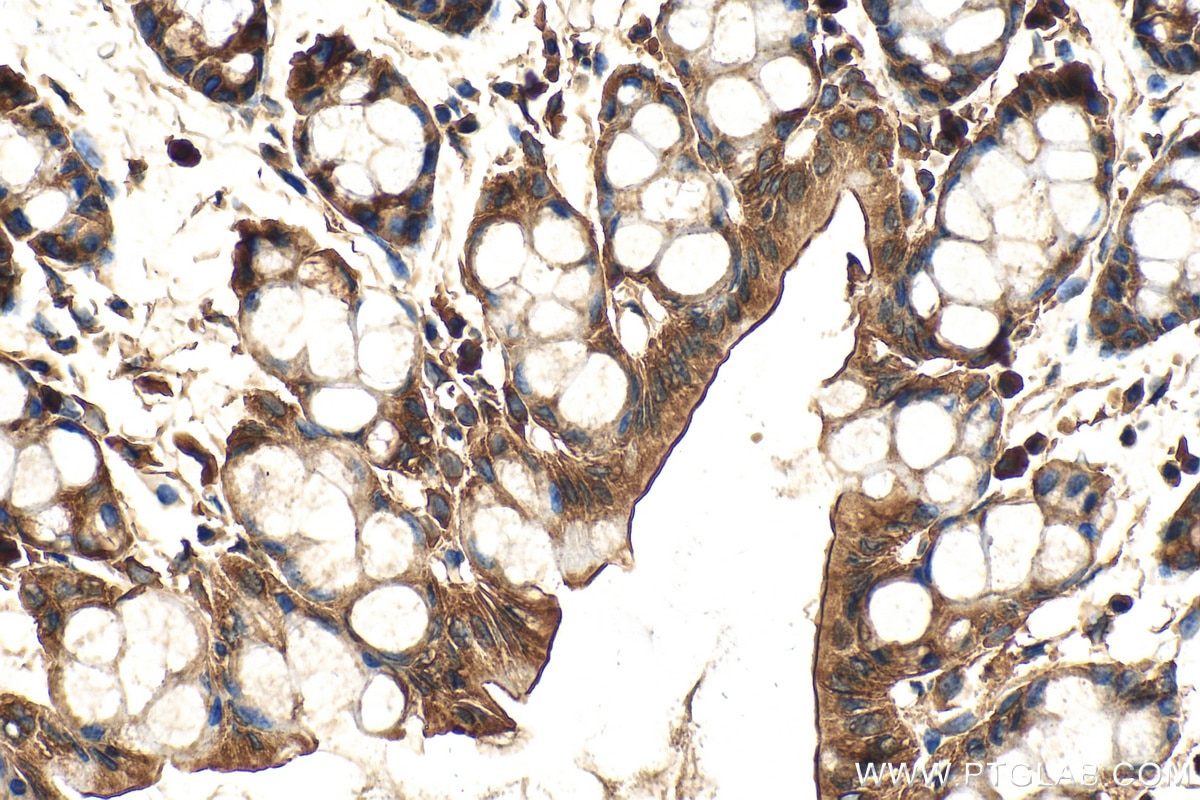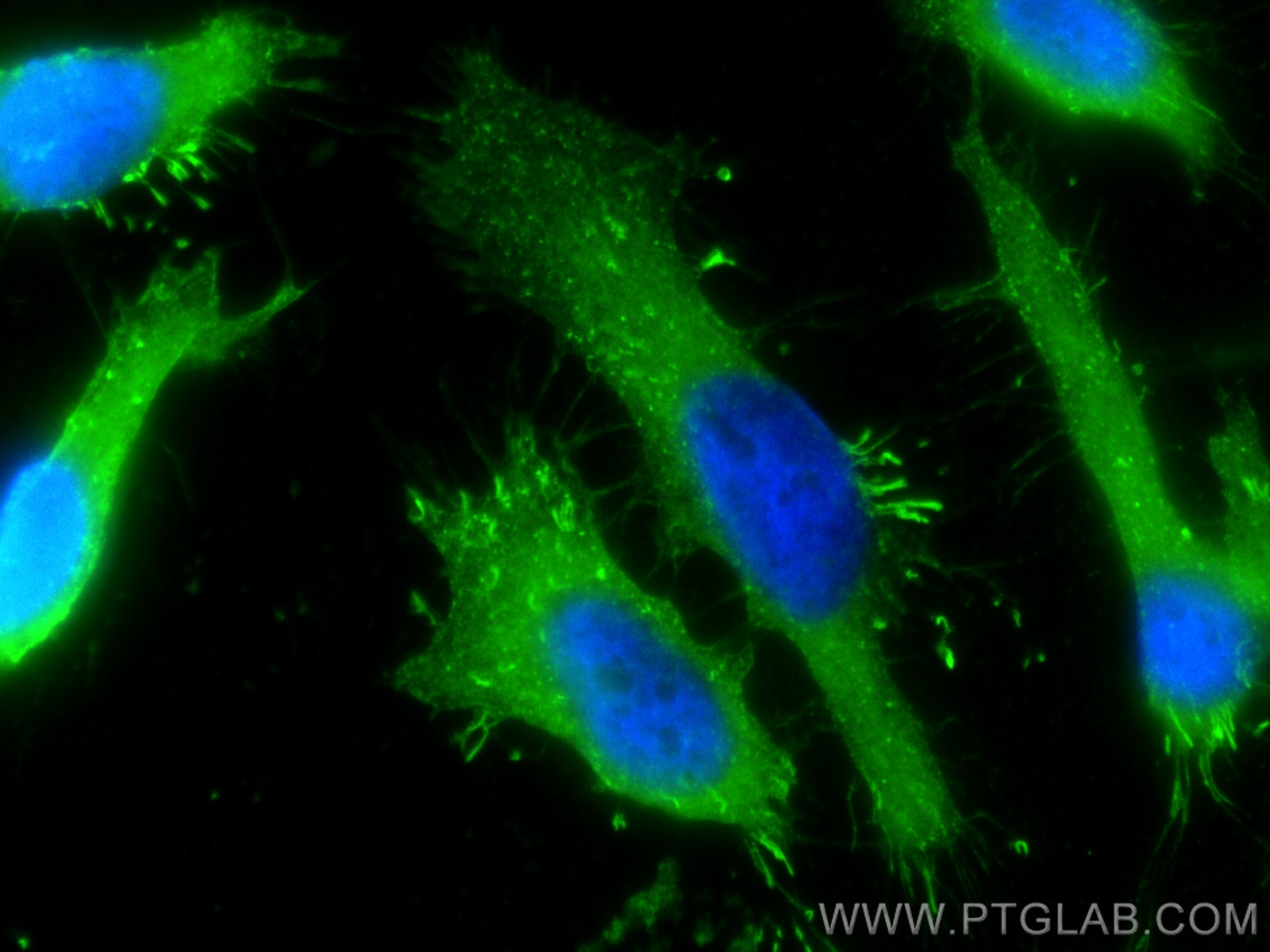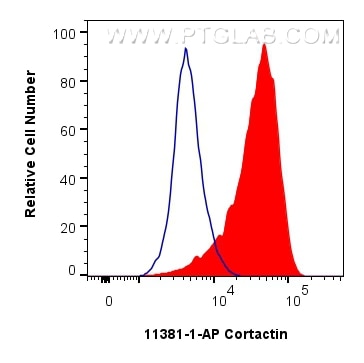- Featured Product
- KD/KO Validated
Cortactin Polyklonaler Antikörper
Cortactin Polyklonal Antikörper für WB, IHC, IF/ICC, FC (Intra), IP, ELISA
Wirt / Isotyp
Kaninchen / IgG
Getestete Reaktivität
human, Maus, Ratte
Anwendung
WB, IHC, IF/ICC, FC (Intra), IP, CoIP, ELISA
Konjugation
Unkonjugiert
Kat-Nr. : 11381-1-AP
Synonyme
Geprüfte Anwendungen
| Erfolgreiche Detektion in WB | HEK-293-Zellen, A549-Zellen, HeLa-Zellen, HT-1080.Zellen, HUVEC-Zellen, MCF-7-Zellen, NIH/3T3-Zellen |
| Erfolgreiche IP | MCF-7-Zellen |
| Erfolgreiche Detektion in IHC | humanes Mammakarzinomgewebe, Maus-Kolongewebe Hinweis: Antigendemaskierung mit TE-Puffer pH 9,0 empfohlen. (*) Wahlweise kann die Antigendemaskierung auch mit Citratpuffer pH 6,0 erfolgen. |
| Erfolgreiche Detektion in IF/ICC | HeLa-Zellen |
| Erfolgreiche Detektion in FC (Intra) | HeLa-Zellen |
Empfohlene Verdünnung
| Anwendung | Verdünnung |
|---|---|
| Western Blot (WB) | WB : 1:5000-1:50000 |
| Immunpräzipitation (IP) | IP : 0.5-4.0 ug for 1.0-3.0 mg of total protein lysate |
| Immunhistochemie (IHC) | IHC : 1:200-1:1000 |
| Immunfluoreszenz (IF)/ICC | IF/ICC : 1:200-1:800 |
| Durchflusszytometrie (FC) (INTRA) | FC (INTRA) : 0.25 ug per 10^6 cells in a 100 µl suspension |
| It is recommended that this reagent should be titrated in each testing system to obtain optimal results. | |
| Sample-dependent, check data in validation data gallery | |
Veröffentlichte Anwendungen
| KD/KO | See 1 publications below |
| WB | See 13 publications below |
| IHC | See 5 publications below |
| IF | See 6 publications below |
| IP | See 1 publications below |
| CoIP | See 1 publications below |
Produktinformation
11381-1-AP bindet in WB, IHC, IF/ICC, FC (Intra), IP, CoIP, ELISA Cortactin und zeigt Reaktivität mit human, Maus, Ratten
| Getestete Reaktivität | human, Maus, Ratte |
| In Publikationen genannte Reaktivität | human, Maus, Ratte |
| Wirt / Isotyp | Kaninchen / IgG |
| Klonalität | Polyklonal |
| Typ | Antikörper |
| Immunogen | Cortactin fusion protein Ag1940 |
| Vollständiger Name | cortactin |
| Berechnetes Molekulargewicht | 57 kDa |
| Beobachtetes Molekulargewicht | 70-85 kDa |
| GenBank-Zugangsnummer | BC008799 |
| Gene symbol | Cortactin |
| Gene ID (NCBI) | 2017 |
| Konjugation | Unkonjugiert |
| Form | Liquid |
| Reinigungsmethode | Antigen-Affinitätsreinigung |
| Lagerungspuffer | PBS with 0.02% sodium azide and 50% glycerol |
| Lagerungsbedingungen | Bei -20°C lagern. Nach dem Versand ein Jahr lang stabil Aliquotieren ist bei -20oC Lagerung nicht notwendig. 20ul Größen enthalten 0,1% BSA. |
Hintergrundinformationen
Cortactin, encoded by CTTN gene (formerly EMS1), was originally identified as a substrate of the Src kinase. It is a cytoskeletal protein that interacts with F-actin and Arp2/3 complex and plays an important role in regulation of actin assembly and cytoskeleton dynamics. Overexpression of cortactin increases cell migration, and is thought to contribute to the invasive phenotype of breast cancer and several other tumors. Three isoforms of cortactin exist due to the alternative splicing. Although cortactin has a predicted molecular weight around 65 kDa, it was detected as 80/85 doublet or as multiple bands between 75 and 85 kDa on SDS-PAGE (PMID: 18607838, 19089942).
Protokolle
| PRODUKTSPEZIFISCHE PROTOKOLLE | |
|---|---|
| WB protocol for Cortactin antibody 11381-1-AP | Protokoll herunterladen |
| IHC protocol for Cortactin antibody 11381-1-AP | Protokoll herunterladenl |
| IF protocol for Cortactin antibody 11381-1-AP | Protokoll herunterladen |
| IP protocol for Cortactin antibody 11381-1-AP | Protokoll herunterladen |
| STANDARD-PROTOKOLLE | |
|---|---|
| Klicken Sie hier, um unsere Standardprotokolle anzuzeigen |
Publikationen
| Species | Application | Title |
|---|---|---|
J Autoimmun Alternative splicing and intron retention: Their profiles and roles in cutaneous fibrosis of systemic sclerosis | ||
Circ. Res. Inhibition of KLF5-Myo9b-RhoA Pathway-Mediated Podosome Formation in Macrophages Ameliorates Abdominal Aortic Aneurysm. | ||
Genes Dev Localization of Kif1c mRNA to cell protrusions dictates binding partner specificity of the encoded protein | ||
Adv Healthc Mater Fiber Microarchitecture in Interpenetrating Collagen-Alginate Hydrogel with Tunable Mechanical Plasticity Regulates Tumor Cell Migration | ||
EMBO J TFAM loss induces nuclear actin assembly upon mDia2 malonylation to promote liver cancer metastasis. | ||
EMBO Rep WDR63 inhibits Arp2/3-dependent actin polymerization and mediates the function of p53 in suppressing metastasis. |
Rezensionen
The reviews below have been submitted by verified Proteintech customers who received an incentive for providing their feedback.
FH Angie (Verified Customer) (03-11-2024) | The antibody detected a band around 80 kD at dilution of 1:5000 incubated at room temperature for 2 hour followed by secondary antibody donkey-anti-rabbit (Alexa Fluor 800) at 1:20000 dilution, incubated 1 hour at room temperature.
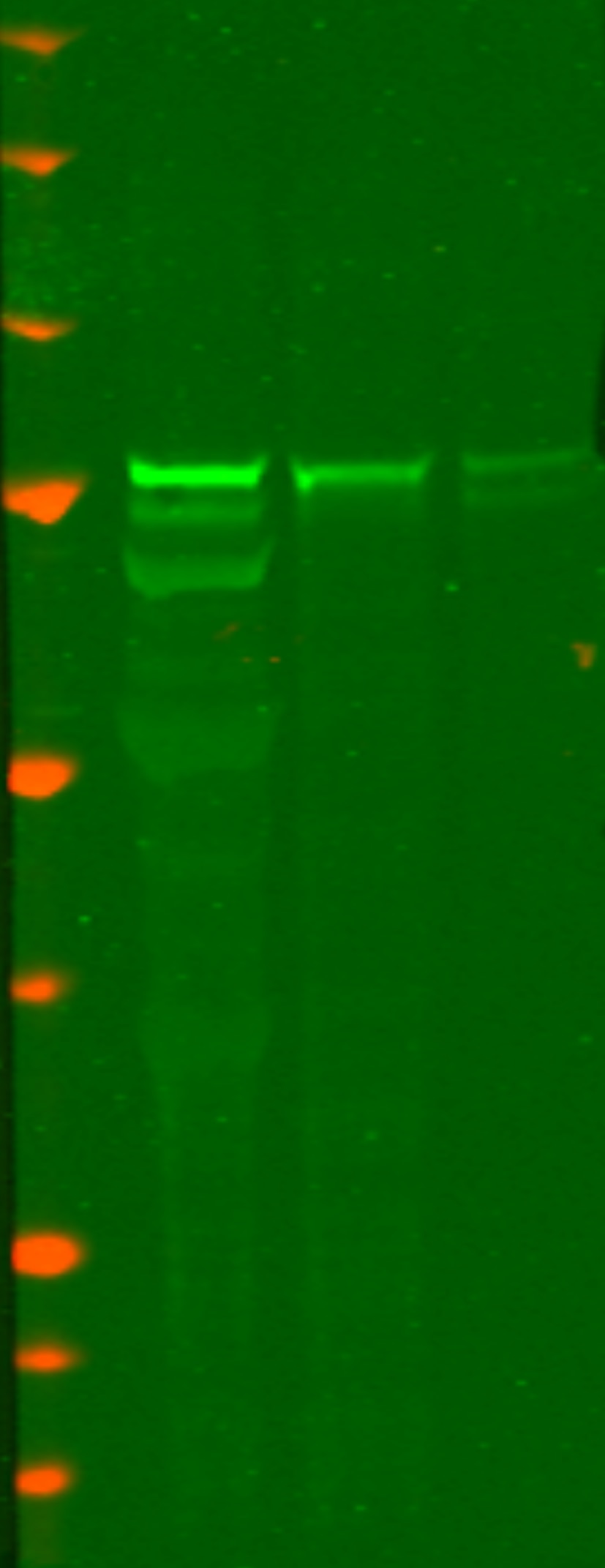 |
